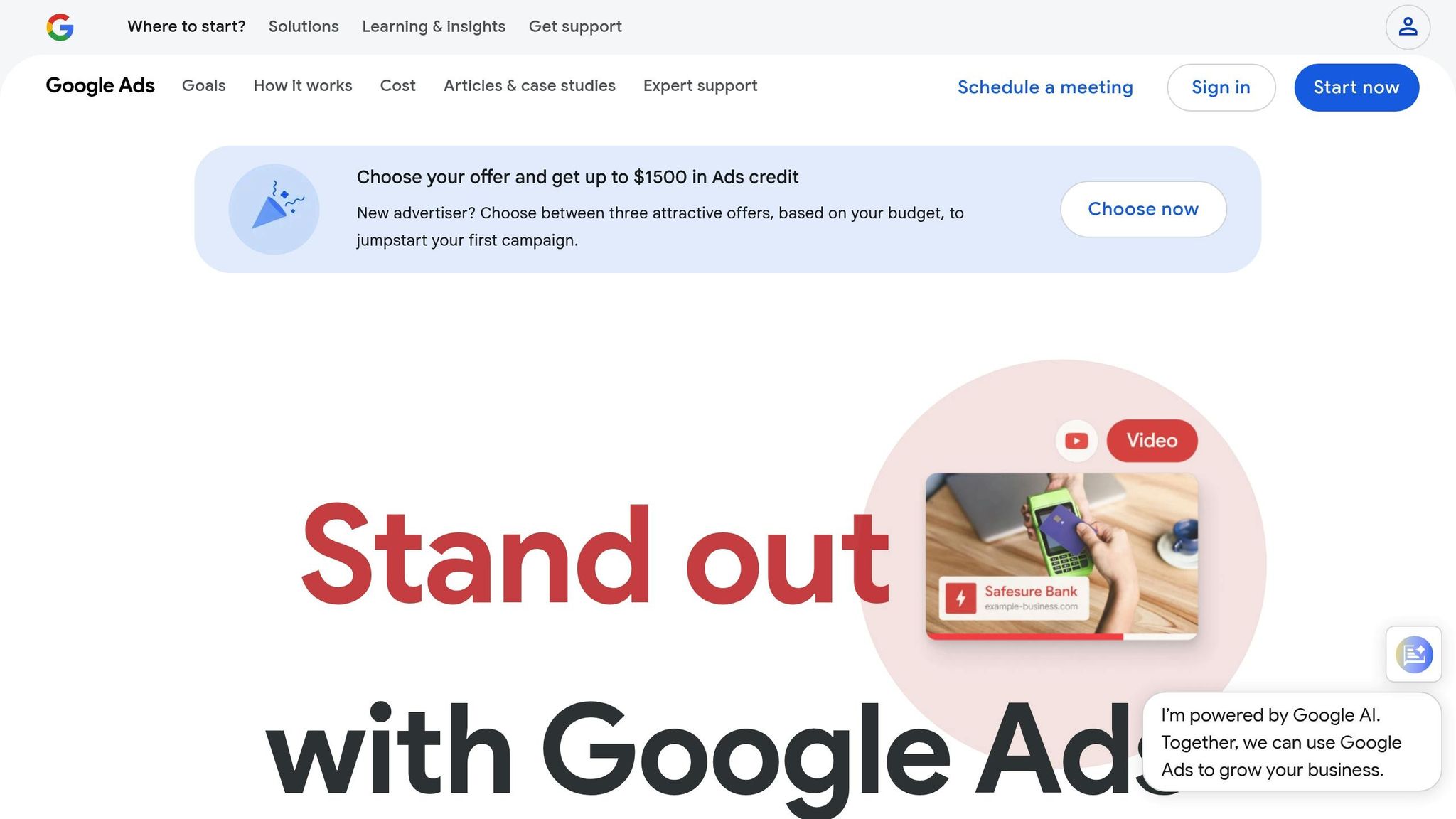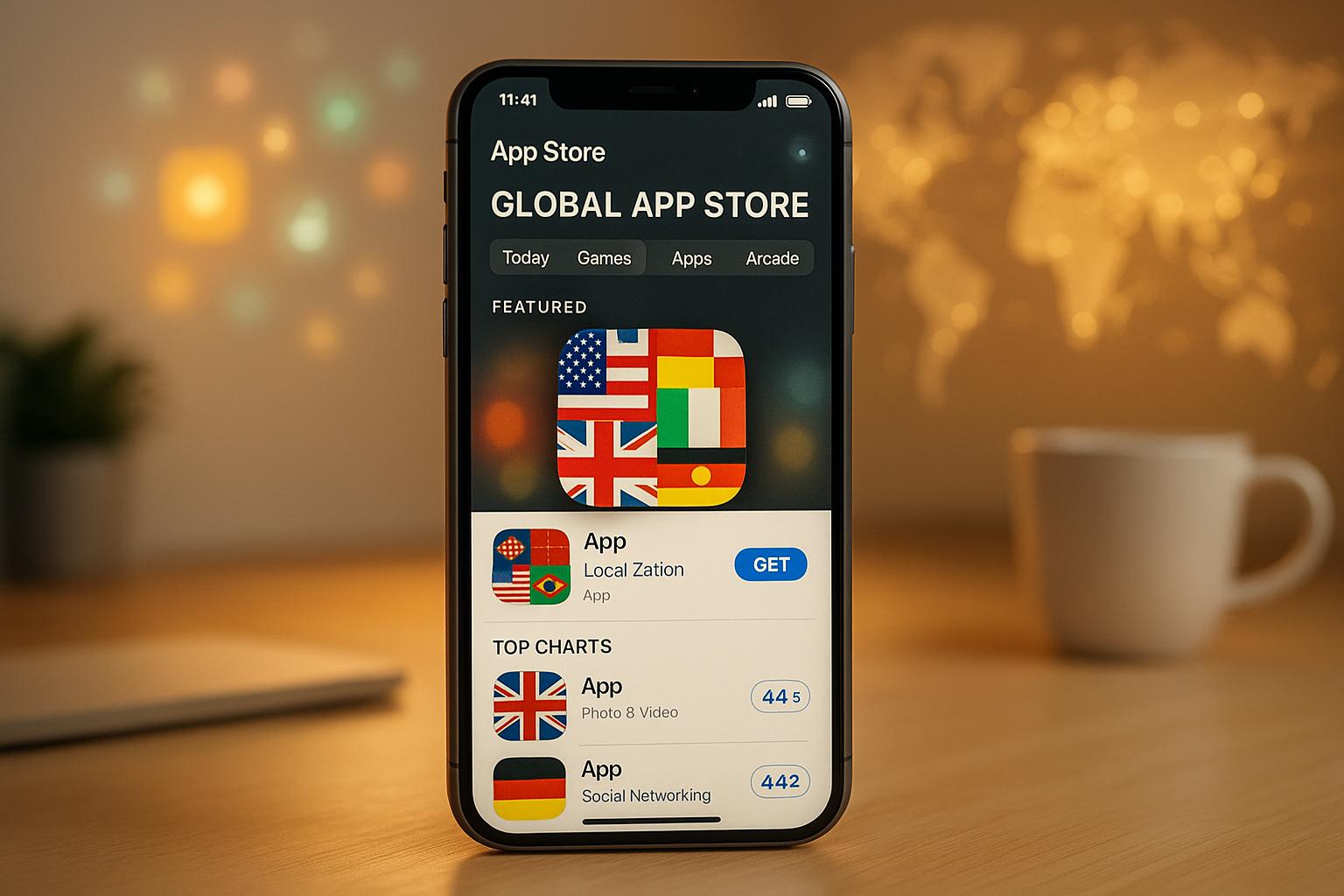Keyword clustering is a method of grouping related keywords based on search intent and themes. This approach simplifies PPC campaign management, improves ad relevance, and boosts performance metrics like Quality Score and ROI. Here's what you need to know:
- Why It Matters: Clustering helps create focused ad groups, leading to better click-through rates, lower costs per click, and higher conversion rates. It also enhances landing page relevance for user intent.
- Building a Keyword List: Use tools like Google Keyword Planner, SEMrush, and AnswerThePublic to find broad and long-tail keywords. Study competitors to refine your list.
- Clustering Methods: Choose between manual (best for small campaigns) and automated methods (ideal for large lists). Consider combining both for precision.
- Hard vs. Soft Clustering: Hard clustering assigns keywords to one group, while soft clustering allows overlap. Pick based on your campaign's goals.
- Implementation: Organize clusters into tightly themed ad groups, align landing pages with user intent, and use Dynamic Keyword Insertion for better ad relevance.
- Optimization: Regularly test, refine clusters, and add negative keywords to filter irrelevant traffic.
Keyword clustering is an ongoing process. By analyzing performance data and adjusting strategies, you can maximize your PPC campaign results.
Keyword segmentation tutorial for high performing Google Ads campaigns

Building Your Keyword List
A solid keyword list is the backbone of successful keyword clustering. The goal here is to compile a thorough collection of terms that reflect how potential customers might search for your products or services. Using keyword research tools can make this process much easier and more efficient.
Using Keyword Research Tools
Keyword research tools are essential for laying the groundwork for effective PPC campaigns. They take the guesswork out of the equation by providing critical data like search volume, competition, and cost-per-click - helping you make informed decisions about your ad spend.
Google Keyword Planner is a staple for PPC keyword research. It’s free and integrated into Google Ads, so the data you get is directly tied to what you’ll encounter in your campaigns. You can explore keyword ideas by entering a broad topic, check search volume and trends for an existing list, or analyze a competitor’s website to see their targeted keywords.
SEMrush goes beyond basic keyword research by offering a deep dive into competitor analysis. It allows you to see which keywords your competitors are bidding on, uncover gaps in your own keyword strategy, and get a clearer picture of their PPC tactics. This combination of SEO and competitor insights makes it a powerful tool for discovering new opportunities.
WordStream's Free Keyword Tool is another great option, especially for those looking to refine their keyword list by industry or location. This filtering capability ensures that the keywords you focus on are highly relevant to your specific market.
By inputting your main topics into these tools, you can uncover related keywords, complete with data on search volume and competition. This method helps you identify valuable keywords that might not surface through manual brainstorming.
Adding Broad and Long-Tail Keywords
Your keyword list should include a mix of broad and long-tail keywords to address different stages of the buyer’s journey. Broad keywords (e.g., "running shoes") attract large audiences, while long-tail keywords (e.g., "waterproof trail running shoes for women") target niche intents with less competition.
Broad keywords are ideal for building brand awareness and engaging users in the early stages of research. While they typically have higher search volumes, they also come with more competition and higher costs per click. These terms help you gauge overall market interest in your offerings.
Long-tail keywords, on the other hand, often lead to better conversions because they reflect specific search intents. For example, someone searching for "best budget running shoes under $100" is likely closer to making a purchase than someone searching for "shoes." These keywords tend to have lower costs per click and face less competition, making them a smart choice for boosting your return on ad spend.
Tools like AnswerThePublic are excellent for discovering top-of-funnel searches by analyzing questions, comparisons, and phrases related to your keywords. This can uncover high-converting long-tail keywords that align with what your potential customers are actively searching for.
Google Autocomplete is another quick and effective way to find trending and popular terms. Start typing your main keywords into Google’s search bar, and note the suggested completions. These suggestions are based on real user behavior, offering insights into terms you might not have considered.
To create a well-rounded keyword portfolio, include both broad and long-tail terms. Broad keywords help you cast a wide net, while long-tail keywords zero in on more qualified traffic that’s ready to convert. Once you’ve built your list, analyze competitor strategies to refine it further.
Analyzing Competitors for Keyword Ideas
Studying your competitors’ PPC campaigns can reveal profitable keywords they’ve already tested. Start by identifying your main competitors - those who frequently appear in search results for the keywords you’re targeting. These businesses likely invest heavily in PPC, meaning they’ve pinpointed keywords that deliver results.
Pay close attention to keywords with multiple competitors bidding on them. This often signals high commercial value. Conversely, if you spot areas where competitors aren’t active, you may have uncovered a potential opportunity.
Look beyond just the keywords themselves - examine the ad copy and landing pages competitors use for specific terms. This can provide insight into how they’re addressing user intent and positioning their offerings. Use this information to refine your own keyword strategy and campaign structure.
However, don’t simply copy your competitors’ keywords. Instead, use their strategies as a guide. Identify patterns, spot gaps, and consider how your unique strengths and audience might respond to different terms. Competitor analysis should complement your own research, not replace it. Tailor your keyword list to align with your specific goals and the needs of your target audience.
Methods and Tools for Keyword Clustering
Once you've built your keyword list, the next step is organizing those keywords into clusters. The method you choose will depend on your campaign goals and the resources available. This process serves as the bridge between keyword research and practical PPC implementation.
Manual vs. Automated Clustering Methods
Deciding between manual and automated clustering comes down to your campaign's scope, timeline, and specific needs. Both approaches play a role in optimizing PPC campaigns.
Manual clustering involves analyzing each keyword's intent individually and grouping them based on campaign parameters. This hands-on method is ideal for smaller campaigns, where the keyword list is manageable. However, it can be time-consuming and often overlooks SERP (Search Engine Results Page) data that could reveal how search engines group similar keywords.
Automated clustering, on the other hand, uses SERP analysis to group keywords that generate similar results. This method is faster and provides valuable insights into how search engines perceive the relationships between your keywords. For example, SE Ranking's Keyword Grouping Tool proved its effectiveness in November 2024 by clustering keywords based on SERP similarities. This made it easier to assign keywords to specific website sections, identify SERP-specific phrases, and access precise search volume data.
"So, we would suggest using this technique when you need to cluster keywords for one or several pages. If you have a new site or a large list of keywords, the automatic grouping method is more effective. It is also helpful when you need to analyze the niche in general or when you need to plan your website's structure."
- Yulia Deda, SEO and Content Marketing Expert, SE Ranking
"It's reasonable to combine manual and automated approaches: by passing your keywords through an automated tool, you'll be able to analyze how search engines see those phrases, and regrouping the clusters afterward (adding, deleting, or moving keywords to other clusters) will allow you to take into account your goals and a particular website's structure."
- Yulia Deda, SEO and Content Marketing Expert, SE Ranking
For the best results, consider a hybrid approach. Start with automated clustering to get a broad overview, then refine the groups manually to ensure they align with your campaign goals and website structure.
Hard vs. Soft Clustering Approaches
Once you've chosen your clustering method, the next decision is how to structure the keyword groups. This choice - between hard and soft clustering - can significantly impact ad relevance and campaign precision.
Hard clustering assigns each keyword to one exclusive group. This method is ideal for campaigns that require clear, non-overlapping divisions between ad groups. It's particularly effective for high-volume keywords, as it allows for highly targeted ad copy and efficient budget allocation.
Soft clustering, on the other hand, takes a more flexible approach. Keywords can belong to multiple clusters, reflecting their varied search intent. For example, the phrase "waterproof running shoes" could fit into both a "running shoes" cluster and a "waterproof footwear" cluster, capturing its relevance in different contexts.
The choice between hard and soft clustering should align with the complexity and goals of your campaign. Hard clustering provides clarity and focus for tightly defined campaigns, while soft clustering can reveal overlapping user intents and deeper semantic relationships, potentially uncovering new opportunities for targeting.
sbb-itb-5be333f
Using Keyword Clusters in PPC Campaigns
Organizing your keyword clusters into focused ad groups can significantly improve your campaign's performance, Quality Score, and ROI.
Organizing Clusters for Better Ad Relevance
The backbone of a successful PPC campaign is aligning keyword clusters with tightly themed ad groups. Each cluster should form its own ad group, enabling you to craft ads that directly address the searcher's intent.
For example, if you have a cluster centered on "waterproof running shoes", the corresponding ad group should include only keywords related to that product category, like "waterproof trail running shoes", "rain-resistant running footwear", and "all-weather athletic shoes." This focused approach boosts ad relevance and Quality Score.
To make your ads even more effective, try using Dynamic Keyword Insertion (DKI) within these tightly themed ad groups. This ensures that keywords naturally fit into your ad headlines, making them more appealing to searchers.
Equally important is tailoring your landing pages to match the keywords in each group. For instance, someone searching for "best waterproof running shoes for marathon training" will have different needs than someone looking for "cheap running shoes." Your landing pages should reflect these distinctions by incorporating the exact keywords into headlines and calls-to-action. When your ads and landing pages are in sync, you're more likely to convert visitors into customers.
Once your ad groups and landing pages are set up, the focus shifts to ongoing optimization based on performance data.
Testing and Improving Your Clusters
Optimization starts as soon as your campaigns go live. Regularly review your search term reports to refine clusters, add high-performing keywords, and exclude irrelevant ones.
Testing is crucial. Experiment with new keywords using small budgets to gauge their performance. This allows you to determine whether a keyword fits within an existing cluster or needs its own dedicated ad group.
Real-time performance metrics like click-through rates (CTR) and conversion rates should guide your adjustments. If certain keywords consistently underperform, consider reorganizing them into new clusters or pausing them altogether.
Landing page A/B testing is another essential strategy. For instance, if one cluster targets budget-conscious shoppers and another focuses on premium buyers, your landing pages should reflect these distinct audiences. Testing different variations can help you identify which approach drives the best results.
Adding negative keywords is also vital. By excluding irrelevant terms, you ensure your ads appear only in searches aligned with your campaign goals. Here's a quick breakdown of match types for negative keywords:
| Match Type | Benefits | Use Cases |
|---|---|---|
| Broad | Excludes a wide range of irrelevant terms | Best for eliminating broadly irrelevant traffic |
| Phrase | Blocks specific phrases | Useful for preventing ads from showing for unwanted phrases containing the negative keyword |
| Exact | Excludes only exact terms | Ideal for highly specific terms consistently attracting irrelevant clicks |
Think of your keyword clusters as dynamic elements in your campaign. As you gather more data, you'll uncover opportunities to refine your strategy - splitting larger clusters into smaller, more focused groups or merging underperforming ones for better results. PPC success comes from constant analysis and adaptation.
Conclusion: Improving PPC Results with Keyword Clustering
Keyword clustering transforms PPC campaigns into streamlined, focused strategies. It starts with building a solid list of keywords using research tools, then organizing them into meaningful groups based on search intent and semantic connections. This foundation is essential for ongoing campaign optimization.
The method you choose depends on your business goals. Manual clustering offers greater control and a deeper understanding of your keywords, while automated tools save time and minimize human error through advanced algorithms. As Makarenko Roman wisely puts it:
"Good PPC keyword research makes or breaks your campaign; it ensures that you are targeting the right audience with the right message at the right time".
The benefits of clustering go beyond organization. It can lead to better Quality Scores, lower cost-per-click rates, and more relevant user experiences. For instance, SEOTesting's research highlights the impact: splitting one long article on keyword cannibalization into four targeted pieces resulted in an 80.13% boost in clicks and an improved average position from 9.18 to 5.32 [22].
To maintain this momentum, regularly audit your clusters to remove outdated terms and identify fresh opportunities. Key metrics like organic traffic, bounce rates, and keyword rankings can guide your adjustments. A monthly review process is crucial - use it to refine your negative keyword list, test new keywords with smaller budgets, and adjust your approach. As Sara Oprasic points out:
"Regularly refining your negative keyword list is a best practice in PPC management. Consistent analysis and adjustment keep your campaigns sharply focused, ensuring your advertising budget is used as efficiently and effectively as possible".
Treat keyword clustering as a continuous process, not a one-time task. Search behaviors change constantly, and staying ahead requires ongoing refinement and adaptation. For additional guidance and expert recommendations on SEO and PPC tools, check out Top SEO Marketing Directory (https://marketingseodirectory.com).
FAQs
How does keyword clustering improve the performance and ROI of PPC campaigns?
Keyword clustering plays a key role in boosting the effectiveness of your PPC campaigns. By grouping related keywords into tightly focused categories, you can make your ad groups more relevant. This directly impacts your Quality Score, which is crucial for securing better ad placements at lower costs. A higher Quality Score means reduced cost-per-click (CPC) and more competitive ad positions - ultimately driving a stronger return on investment (ROI).
On top of that, clustering helps cut down on wasted ad spend by focusing only on the keywords that matter most to your audience. This ensures your budget is spent wisely, increasing your campaign's profitability. Plus, when you organize keywords strategically, you can craft more personalized and engaging ad copy, which leads to higher click-through rates and more conversions.
What are the advantages of combining manual and automated keyword clustering for large PPC campaigns?
Combining manual and automated keyword clustering in large PPC campaigns can give you the best of both approaches. With manual clustering, you have complete control to craft ad groups that are laser-focused on your audience's specific interests. This level of precision can lead to higher ad relevance, improved click-through rates, and better overall campaign performance.
Meanwhile, automated clustering shines when you're dealing with a massive volume of keywords. It helps organize them quickly and efficiently, making it much easier to handle large-scale campaigns. By merging these methods, you get the customization and accuracy of manual efforts paired with the time-saving and scalable benefits of automation. This mix helps create well-structured campaigns while ensuring your budget is used wisely.
What’s the difference between hard and soft keyword clustering for PPC campaigns, and how do I choose the right one?
The decision to use hard or soft keyword clustering comes down to how you want to structure your keywords and what you're aiming to achieve with your PPC campaign.
With hard clustering, each keyword is assigned to a single group. This method works best when you need tightly focused ad groups with clear and distinct themes. It’s particularly effective if your keywords are highly specific and don’t overlap in meaning, making it easier to create targeted campaigns.
In contrast, soft clustering allows a keyword to belong to multiple groups. This approach is ideal for identifying broader connections and semantic relationships, especially when your keywords have overlapping meanings or reflect more complex search intents.
Use hard clustering for precise segmentation and targeting, or go with soft clustering if you want more flexible groupings that align with natural language patterns and diverse search behaviors.


